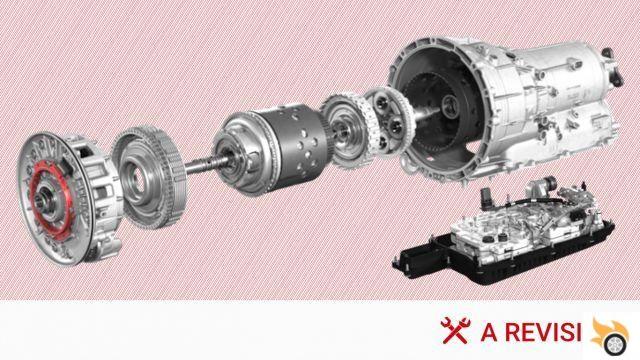
Introduction
The gearbox is a fundamental part of any vehicle, since it allows changing gears and controlling speed. In this article, we will cover different aspects related to a car gearbox, from possible causes of damage to common breakdowns and how to repair them. We will also give you tips to avoid common mistakes that can permanently damage it. In addition, we will warn you about a noise in the gear lever that can indicate danger. Read on for all the information you need!
Causes of gearbox damage
One of the main causes of gearbox damage is misshifting. It is important to make changes smoothly and without forcing the lever. Making mistakes when engaging gears can also cause damage, such as trying to engage a gear without fully depressing the clutch. Another factor that can affect the correct operation of the gearbox are failures that prevent the gears from engaging properly, such as a worn clutch or a faulty synchronizer.
Common gearbox faults and how to repair them
There are several common breakdowns that can occur in a car gearbox. One of them is the wear of the synchronizers, which can cause difficulty in changing gears. In this case, it is necessary to replace the damaged synchronizers. Another common fault is the loss of oil from the gearbox, which can cause poor operation. In this case, it is important to check the oil level and fill it up if necessary. Also, strange noises may be produced in the gearbox, which may indicate a problem with the bearings. In this case, it is advisable to go to a specialist for repair.
Common mistakes that can damage the gearbox
Avoiding common mistakes is essential to keep the gearbox in good condition. One of the most common mistakes is not fully depressing the clutch when changing gear, which can cause premature clutch wear and damage to the gearbox. Another common mistake is changing gear without fully releasing the throttle, which can cause excessive wear on gearbox components. Also, it is important not to force the shifter, as this can cause damage to the synchronizers and gears.
Frequently Asked Questions (FAQs)
1. How can I tell if my gearbox is damaged?
There are several signs that can indicate that the gearbox is damaged. Some of them are: difficulty changing gear, strange noises when changing gear, vibrations in the gear lever, loss of power or difficulty accelerating. If you experience any of these symptoms, it is advisable to see a specialist for a review.
2. How long does a gearbox last?
The duration of a gearbox can vary depending on the maintenance and the use given to the vehicle. In general, a well-maintained gearbox can last between 150,000 and 200,000 kilometers. However, it is important to perform regular checks and follow the manufacturer's recommendations to prolong its useful life.
3. Can I repair the gearbox by myself?
Repairing the gearbox on your own can be complicated, since it requires technical knowledge and specific tools. Also, a mistake during the repair can make the problem worse. Therefore, it is advisable to go to a gearbox specialist for repair.
Conclusion
The gearbox is an essential part of any vehicle and its proper functioning is essential for safe and efficient driving. In this article, we have covered different aspects related to the gearbox, from the possible causes of damage to common faults and how to repair them. We have also given you tips to avoid mistakes that can permanently damage it. Always remember to change gears smoothly, fully depress the clutch and do not force the gear lever. If you experience any problem with your gearbox, it is advisable to go to a specialist for its review and repair.
We hope this article has been useful to you and we invite you to leave us your comments and questions. We will be happy to help you!
Until next time!
The Pistonudos.com team


























